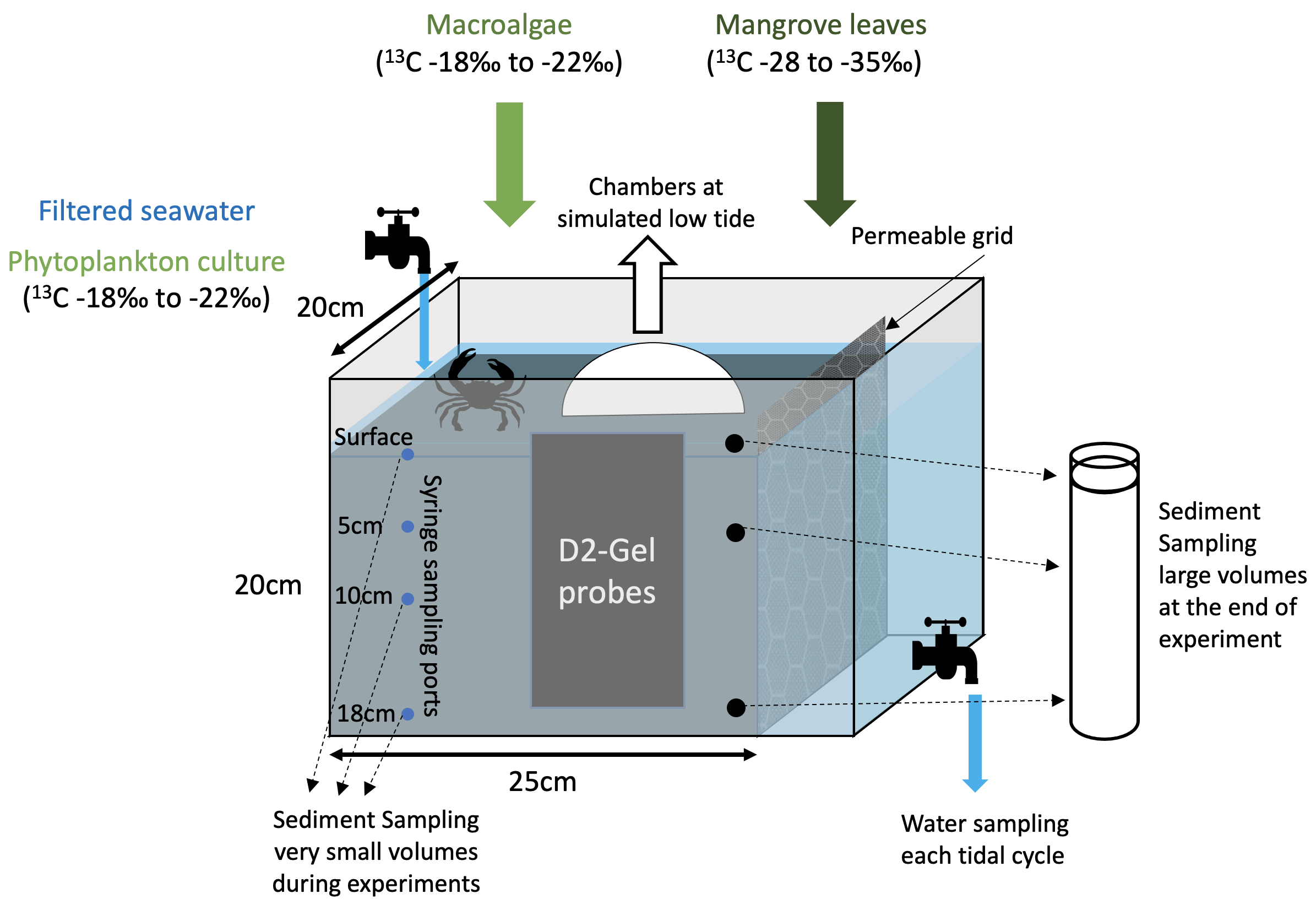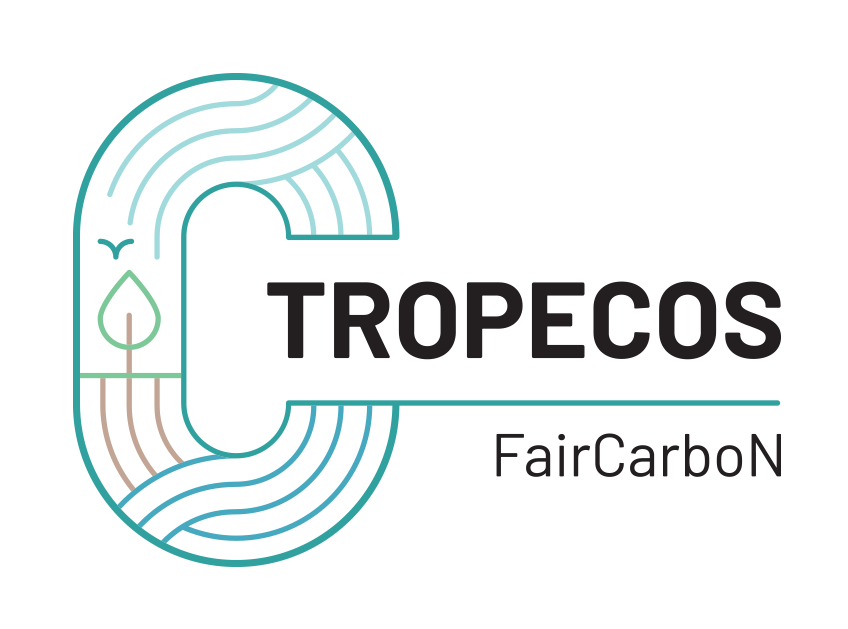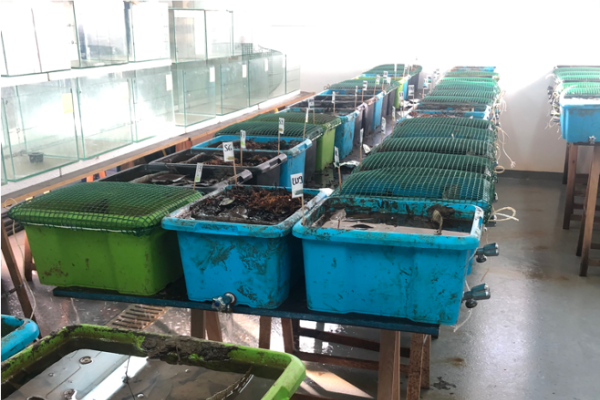Priming effects occur when the microbial community is stimulated in the presence of labile OM with high energy and nutrients contents, leading to an additional breakdown of the more recalcitrant OM present deeper in the soil. Priming effects potentially occur in blue carbon ecosystems of eutrophic regions. We carry on mesocosm experiments with intact soils and extraction of seawater at about 15cm below the sediment surface to mimic tidal pumping and to quantify export of DIC, DOC and POC and their 13C composition. At simulated low tide, mini gas chambers allow the quantification of CO2 and CH4 fluxes, and the determination of their 13C signature. Incubations are performed in the presence or absence of ocypodidae crabs and last several mouths with continuous enrichment of the soil with known quantities of mangrove leaves and algal labile OM of contrasted 13C and biomarkers signatures. Mass conservation allows us to calculate the relative proportion of algal (13C -18‰ to -22‰) and mangrove soil OC (13C -28 to -35‰) being remineralised and exported as CO2, CH4, DIC and DOC.

Positive or negative priming effects are quantified as the difference of remineralisation rate of the mangrove soil in the presence or absence (control) of algae. We also follow the evolution of redox gradients and microbial communities in the soil with non-destructive 2D gel probes (See WP3) inserted in the soils’ tanks in order to follow the vertical migration of redox fronts following OM additions and the role of crab activity if bioturbation and bioirrigation. Soil OM composition and the structure of microbial community (bacteria/archaea and fungi) assemblages are determined (as in WP3) throughout the time course of experiments as well as enzyme activities.

